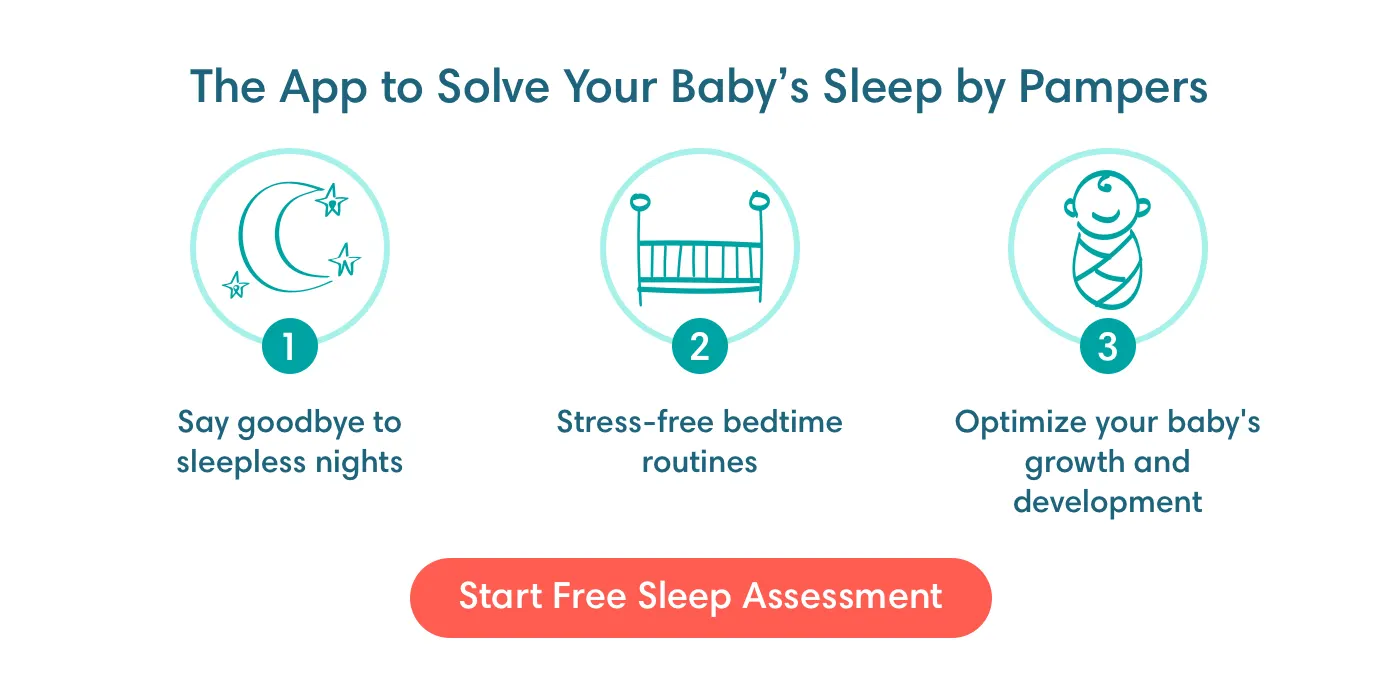Is it Okay to Let Your Baby Cry?
If your little one is over 6 months old, you might wonder whether it is a good idea to try sleep training your baby, and if so, what the different methods are like. You might even be wondering if sleep training is right for you. Although not recommended by the NHS, the ‘cry-it-out’ or “crying extinction’ method is one of a few different methods of sleep training available. We are going to walk you through the method and help you to decide if sleep training is right for you and your baby, and also let you know what experts currently say on the method and on baby sleep patterns.
Explanation of the Cry-It-Out Method
The cry-it-out method, also known as the extinction method, is a sleep training method where you let your baby cry on their own, without your intervention, until they fall asleep. There are various different methods of sleep training, including bedtime fading and the Ferber method. Bedtime fading and the Ferber method are ‘controlled crying methods’ with parental intervention.
It is interesting to note that the concept of sleep training is relatively new and has its origins in America, dating back to the early 1900s. As for the method of controlled crying, it was made popular by a paediatrician called Richard Ferber in the 80s. There is also a British author, Gina Ford, who wrote a book on sleep training.
Current NHS advice recommends that you do not leave your little one to cry for longer than 10 minutes at a time, whereas the cry-it-out method suggests that you to walk away until the child falls asleep. Therefore, this approach is not recommended or endorsed by the NHS.
The Most Common Sleep Training Methods:
The cry-it-out method. Letting your baby cry themselves to sleep without intervening unless you think it is an emergency. Determining an emergency includes making sure that your little one is not unwell, is clean and dry (they may need a nappy change), is warm enough or cool enough, or has not become stuck in their cot. For these reasons, leaving your baby for longer periods of time may not be the best idea.
The Ferber method. With this approach, you leave your child for increasingly longer intervals between coming back to their cot to check on them. Ferber recommends that the longest interval is no more than 10 minutes between checks. This is sometimes known as a controlled crying or self-soothing method.
Bedtime fading. This technique helps you identify the best bedtime for your little one. Gradually, you’ll shift your baby’s bedtime later each night (by about 10 to 15 minutes) until you find the sweet spot when your baby is tired enough to fall asleep on their own.
Other methods. There are quite a few different sleep training methods that you can try as well as the ones mentioned above.
Smart Sleep Coach Tip The cry-it-out method, not recommended by the NHS, can be replaced by gentler approaches like the Smart Sleep Coach by Pampers. This tool monitors your baby’s unique sleep patterns and offers tailored recommendations, creating a nurturing sleep environment. Providing real-time feedback and expert guidance, the Smart Sleep Coach app promotes a compassionate sleep training approach, leading to a happier household. Take our free sleep assessment today and turn you and your baby into a dream team. |
Baby’s Sleep Needs by Age
It is recommended that a baby under 6 months of age should sleep in the same room as you, as this has been proven to reduce the risk of SIDS (sudden infant death syndrome) by half. The cry-it-out method relies on you being able to leave your baby and walk away, so it would probably be ineffective to try to sleep train your baby while you are sharing their room. As with any training technique, sleep training will not work if your child is crying because they are feeling unwell, are hungry, too hot or cold, or need their nappy changing. These factors need to be considered first if you have a crying baby at bedtime. A soothing bedtime routine with a warm bath and songs might also do the trick to get your child to wind down and go to sleep.
These are the various stages of sleep patterns and feeding that your baby will go through during the first 6 months:
Newborn to 3 months: a very young baby likes lots of sleep and regular feeds. They are adjusting their natural sleep cycles around their growing needs and are not able to respond to a sleep training method. Little babies need your attention; they thrive on cuddles, the comfort of having you near them and the security that you provide. So it is a firm ‘no’ to any kind of sleep training technique at this stage. The care of a newborn baby should never include cry it out.
3 to 6 months: by 3 months of age, you could be enjoying longer sleeps at night anyway – many babies can manage 6 to 8 hours of unbroken night time sleep at this age, although not all do. But it is still too early to even think of sleep training during these early months.
6 months plus: at 6 months old, your baby will need about 13 to 14 hours of sleep a day (not all in one stretch), and will probably also be waking up during the night for a feed, so it is natural that they may still have a broken night’s sleep. You will have better luck with sleep training if you decide to wait until they are a little older and their sleep patterns have started changing. As baby grows older, they will go through changes in their habits, such as not needing that third daytime nap, being awake for longer during the day and not settling down as quickly at night.
Handy tip |
How the Cry-It-Out Method Is Done
Quite simply, after making sure that baby is fed, warm, clean and dry, you put them down for a sleep in their cot at bedtime. If they start crying, you leave them and do not go back until they have cried themselves to sleep – unless you think it is an emergency. This is the technique that is known as ‘extinction sleep training’ because you do not respond to your baby’s cries. They literally cry it out and (in theory) after a time, they go to sleep.
As mentioned above, leaving a baby to cry for longer than 10 minutes is not recommended. There is a chance that your baby may settle down to sleep within 10 minutes. There are plenty of things that you can do before bedtime to help your baby to relax and prepare for the night that may encourage them to go to sleep more quickly.
Better Bedtimes for Baby
Here are a few things you can do to make bedtime a better experience for both you and your little one:
Naps during the day. From 4 months old, babies need at least two naps each day, usually one in the morning and another at midday. They will often also take another nap in the afternoon. Contrary to what you might have heard, cutting down on your baby’s naps will not make for a better night’s sleep. If your baby still needs a third nap, it's okay to keep it! If they don’t, it’s okay to let them play or stay awake for longer. An overtired baby is not a better sleeper.
Bedtime routine. A warm bath before bed is both fun and relaxing for your baby, and it is a time for you to play with baby, talk to them and wind them down before they go to sleep. When they are dry and dressed, with a clean bedtime nappy, you can also spend some time with them singing songs or rocking them in your arms. As your baby settles into a sleep rhythm, they'll start to associate night time with sleep and daytime with fun. A calm bedtime routine helps your baby to wind down at the end of the day and understand that it's time for a sleep.
Check that your baby is comfortable. A clean, warm, dry baby with a full belly will sleep much more readily than a hungry one with a wet nappy. Babies often need winding or burping – rubbing their back gently after a feed – before they can settle down for a sleep. Make their cot comfortable, dim the lights and make sure that they are not too warm or cold. Talk to them in a soft voice and don’t start playing games with them that might awaken their curiosity!
Night music. Although generally it is better if your child can go to sleep in a quiet, dim room, some babies love to watch a mobile above their cot or listen to gentle music just before they go to sleep. Whether you are singing to them, playing a soothing lullaby on a toy or even letting them listen to white noise, you will very likely find something that helps to calm your baby in those drowsy moments before they nod off.
Is Cry-It-Out Bad for Your Baby?
The big question is, does letting your baby cry it out actually harm them? Much research has been done to back both sides of this argument, both for and against the idea of ‘cry it out’. Sleep training is a fairly new concept and one that has its roots in a modern, Western culture. Around the world, there are many different approaches to soothing a crying baby, and these include using slings and bags to make babies feel secure and safe.
Cry-it-out originated in the mid-1900s when some researchers suggested that crying was good for babies. However, these opinions were not evidence-based. The biggest change from this early advice is that it is now not recommended to leave a baby crying for more than 10 minutes, which rules out the extinction method.
Some babies suffer from colic in the early months. It is unlikely that a baby with colic will respond to sleep training. Colic is not properly understood, but it is believed that it causes babies pain or discomfort. It can last for a few days or even weeks. You can talk to your GP or health visitor if you think that your baby has colic – they may not be able to stop it, but they can help with support and advice.
Many studies have been done on the subject of the cry-it-out method, and other sleep-training techniques have also been examined. Some experts say that it is not believed to be harmful and can be beneficial for the parent and the child.
Other experts have questioned whether or not it is a good idea to ignore a crying baby, speculating if the cry-it-out method is more about a rigid Western approach to child-rearing than a benefit to the child.
It can also be a very noisy and somewhat stressful experience if you have a baby who refuses to settle while you are trying to get them to sleep. Cry-it-out might not help if you have an older child or toddler who is also trying to settle down at night.
The Lullaby Trust and the NCT offer lots of help and advice on getting a baby to sleep better, and the NHS suggest a number of different ways in which you can soothe your baby to sleep. You can also get helpful tips from your health visitor when you take baby for check-ups.
In summary |
FAQS AT A GLANCE
The NHS recommend leaving your baby for no longer than 10 minutes before checking on them if they are crying, whatever method you use.
The Bottom Line
Extinction sleep training (or the cry-it-out method) was first recommended in an era when it was believed that crying was good for babies. It is largely practised in America, Australia and the UK. Parts of the method are based on the idea that you can let your baby cry it out for long periods of time without intervention, but this is no longer recommended: 10 minutes is the maximum amount of time that you should leave a crying baby.
There are now questions being asked by experts as to whether ignoring an infant’s cries are detrimental to its development and emotional growth as well as studies that acknowledge that it is natural for babies to wake during the night. Sleepless nights can be very hard on you, especially if you’re looking after a colicky baby. Most babies get the sleep that they need – especially as they will be napping during the day – and will tend to sleep for longer as they get older.
Now you know a little more about cry-it-out sleep training, and also that there are some other methods out there that do not involve you having to leave your little one crying for long periods of time. You know what is best for you and your baby, and hopefully you will now have a few ideas on how you can both get a better night’s sleep. Rest assured, your child’s sleep patterns will quickly change as they grow older, and by the time they reach 12 to 18 months, you may all be getting a good night’s rest.
The information in this article is based on the expert advice found in trusted medical and government sources, such as the National Health Service (NHS). You can find a full list of sources used for this article below. The content on this page should not replace professional medical advice. Always consult medical professionals for full diagnosis and treatment.


